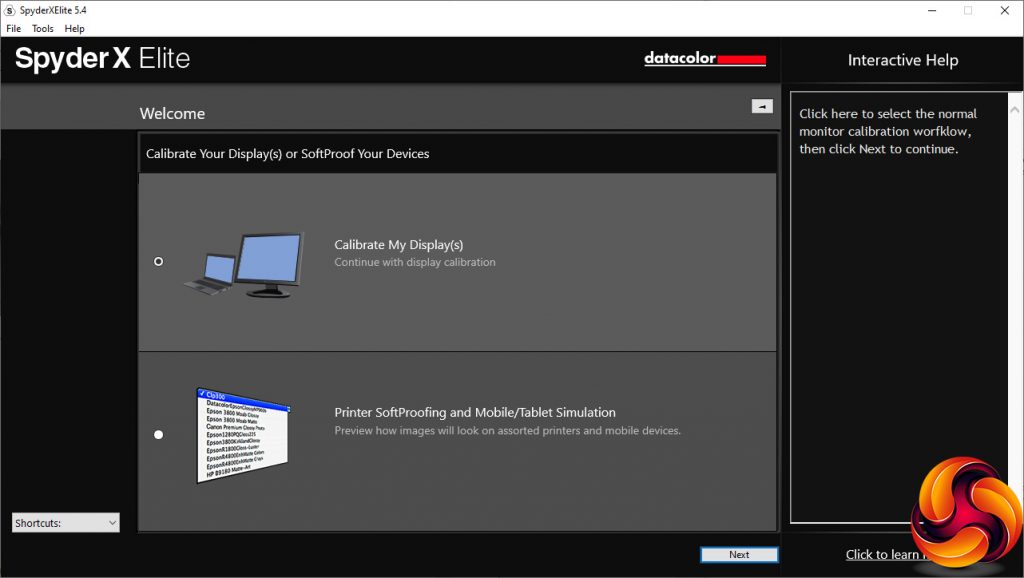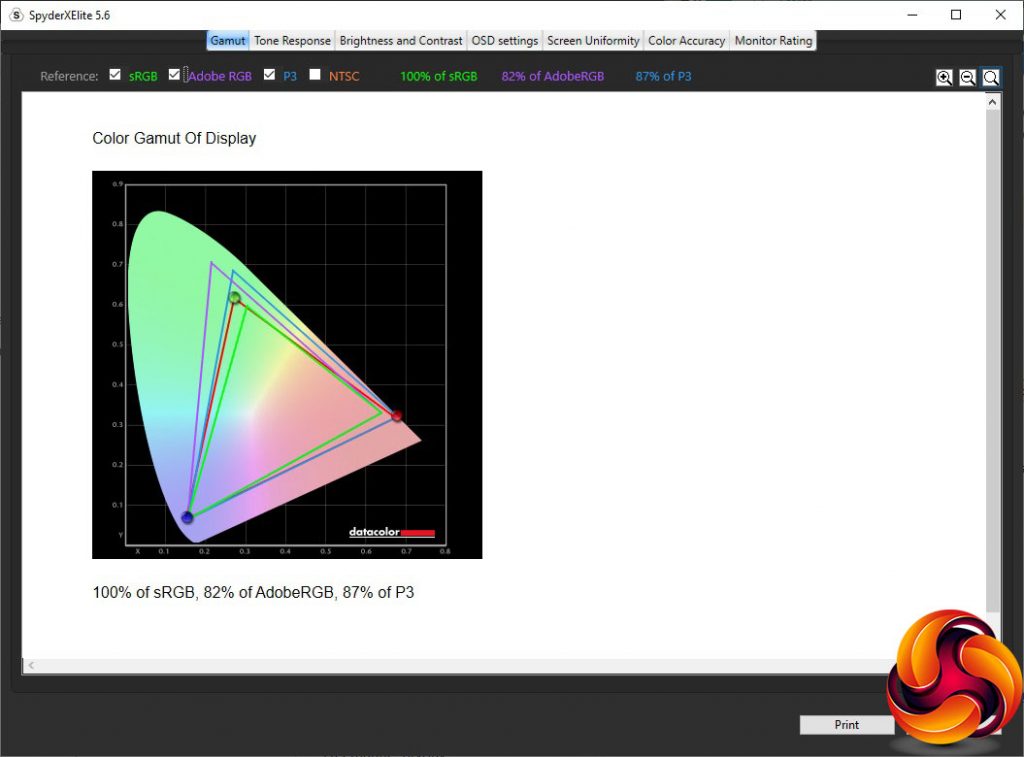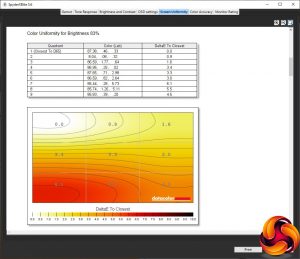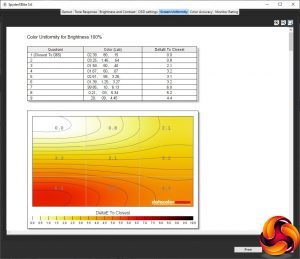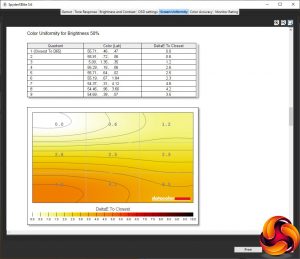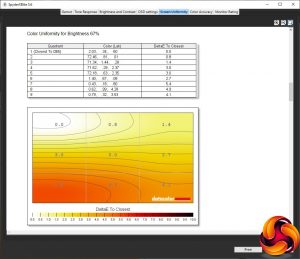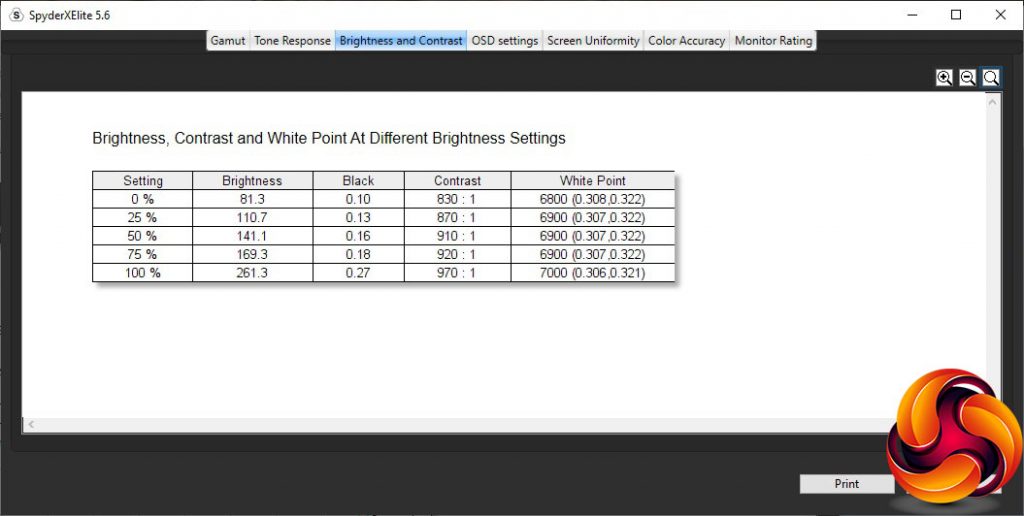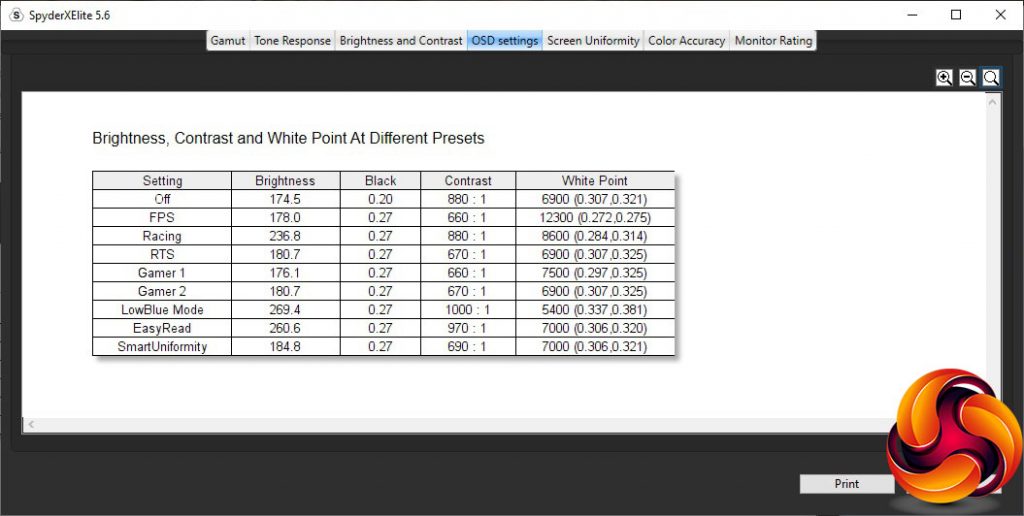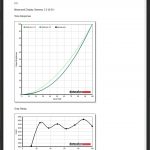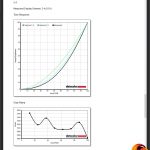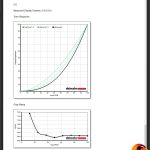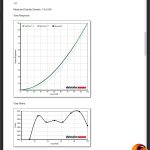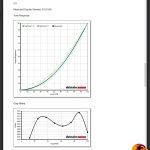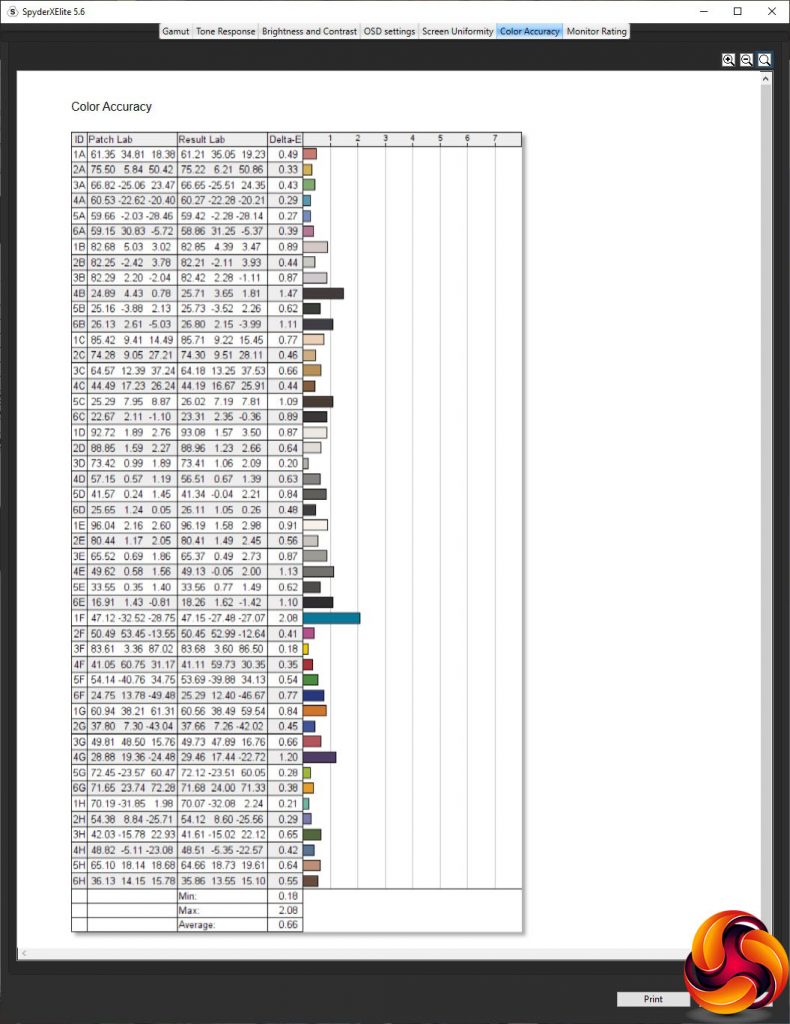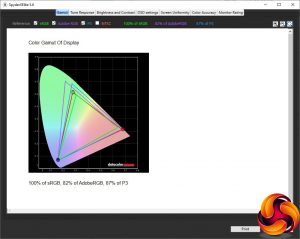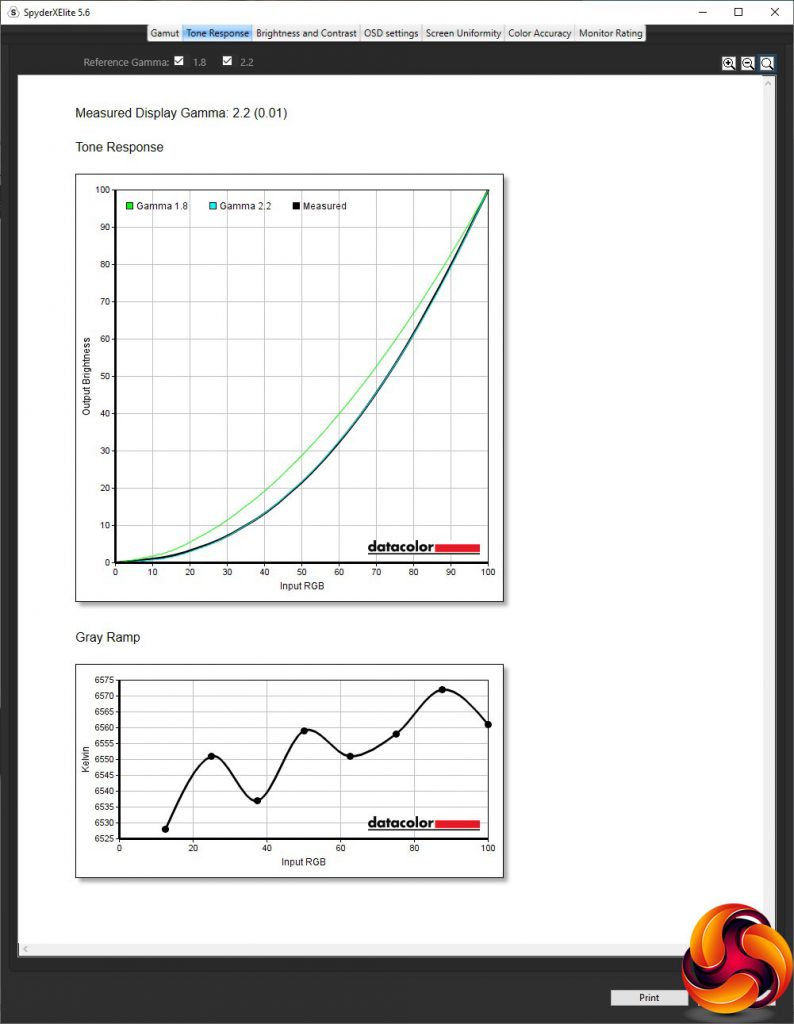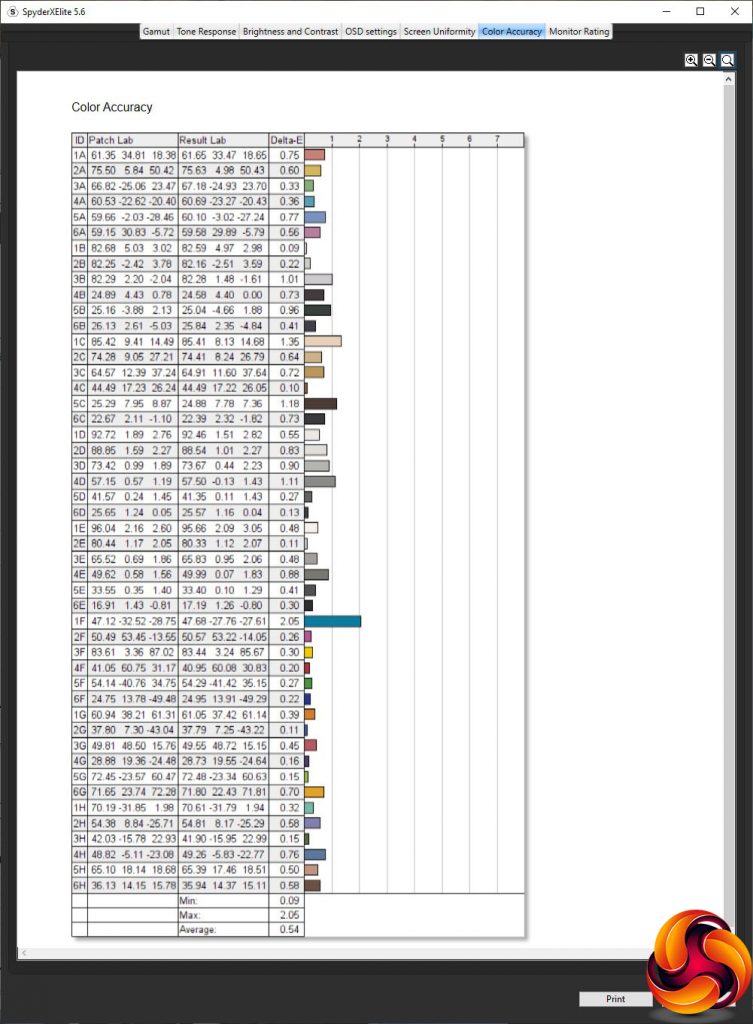Our main test involves using a DataColor SpyderX Colorimeter to assess a display’s image quality. The device sits on top of the screen while the software generates colour tones and patterns, which it compares against predetermined values to work out how accurate the screen is.
The results show –
- A monitor’s maximum brightness in candelas or cd/m2 at various levels set in the OSD.
- A monitor’s contrast ratio at various brightness levels in the OSD.
- The brightness deviation across the panel.
- The black and white points.
- The colour accuracy, expressed as a Delta E ratio, with a result under 3 being fine for normal use, and under 2 being great for colour-accurate design work.
- The exact gamma levels, with a comparison against preset settings in the OSD.
We first run this test with the display in its default, out-of-the-box state, with all settings on default. We then calibrate the screen using the Spyder software and run the test again.
We always test the display subjectively on the Windows desktop, using it for general tasks such as browsing and word processing, and with games as well, even if the display is not intended solely for that purpose.
We pay careful attention to any artefacts, ghosting or motion blur, and enable any gaming-specific features, such as adaptive-sync settings like G-Sync or FreeSync, using a compatible graphics card in our test PC.
We performed the quality tests on the Philips 288E2UAE at its native 3840 x 2160 resolution in the default mode, after resetting the OSD, which sets the refresh to 60Hz. Our test system was equipped with an AMD Radeon Vega Frontier Edition graphics card, which supports FreeSync.
Things get off to a reasonable start with the gamut. The 100 per cent sRGB is to be expected, but 82 per cent AdobeRGB and 87 per cent DCI-P3 are merely reasonable.
Brightness uniformity is excellent in the top two thirds of the screen, but not so outstanding in the bottom third.
Colour uniformity is merely mediocre, too.
This panel is rated at 300cd/m2, but it only reaches 261.3cd/m2 at 100 per cent. The white point goes up a little with brightness, and is above the default 6500K. Contrast, however, gets quite close to the rated 1,000:1, which is decent for an IPS panel. This is a technology that isn't known for its high contrast levels.
There is a reasonable variety between the different SmartImage presets, although all of them (bar “Off”) have the same 0.27 black point. Note also that “Off” corresponds to a default 80 per cent brightness, giving 174.5cd/m2, 880:1 contrast, and 6900K white point. The FPS gaming mode is slightly brighter at 178cd/m2, 660:1 contrast and with a very cool 12300K white point. Racing is brighter at 236.8cd/m2, the same 880:1 contrast as “Off”, and still cool 8600K white point. RTS is similar to FPS in brightness and contrast, with 180.7cd/m2 and 670:1 respectively, but a midrange 6900K white point.
The two Gamer modes are virtually the same, with similar levels of brightness and contrast, but Gamer 1 has a slightly cooler white point. LowBlue Mode is the brightest preset at 269.4cd/m2, and also the highest contrast at 1,000:1 – spot on the spec for this screen. Unsurprisingly, this preset has a much warmer 5400K white point. EasyRead and SmartUniformity both have a midrange 7000K white point. However, EasyRead is bright at 260.6cd/m2 and high contrast at 970:1, whereas SmartUniformity is less bright at 184.8cd/m2 and lower contrast at 690:1.
With the exception of the 1.8 option, the gamma readings correspond exactly to their nominal values. This is reassuring if you want to set a specific gamma level.
Colour accuracy is where we expect IPS panels to excel, and the 288E2UAE epitomises this quality. The average deviation out of the box of 0.66 is outstanding, and one of the best values we have ever seen. If you're buying a monitor to be sure of the colours, this screen would be a great choice. But, as always, we wanted to see if calibration could improve things still further, so we fired up the SpyderX once more to make further adjustments.
As we usually see, the gamut remains unchanged. The sRGB reading is still the maximum 100 per cent, AdobeRGB remains at 82 per cent, and DCI-P3 stays at 87 per cent.
We only retested the default Gamma 2.2, because this usually doesn't change with calibration. It hadn't. It was still reading as 2.2.
Despite already having a great accuracy level, the 288E2UAE improves even further with calibration, exhibiting an average deviation of just 0.54. This panel is clearly extremely faithful to colour.
Overall, although there are some areas of imperfection in this panel, with a merely mediocre gamut and some non-uniform areas, but the colour accuracy is superb. This is a priority feature for a monitor primarily aimed at business, media and professional usage.
We did still try some gaming on this screen, primarily CS:GO. It was adequate, but nothing like as smooth as high-refresh screens that are aimed specifically at this kind of scenario.
Be sure to check out our sponsors store EKWB here
 KitGuru KitGuru.net – Tech News | Hardware News | Hardware Reviews | IOS | Mobile | Gaming | Graphics Cards
KitGuru KitGuru.net – Tech News | Hardware News | Hardware Reviews | IOS | Mobile | Gaming | Graphics Cards



